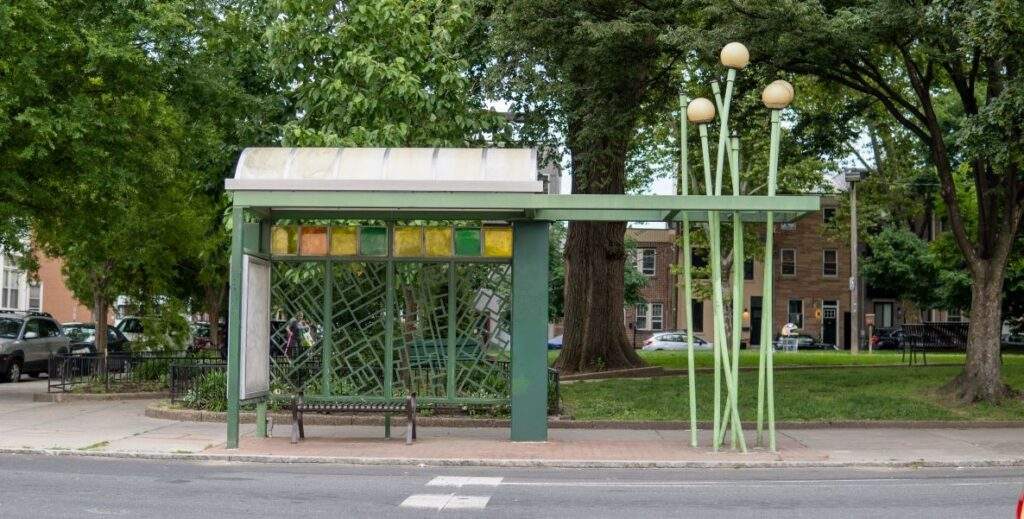I was a major consumer of Saturday morning cartoons in my childhood.
My favorite, by far, was Wile E. Coyote and The Roadrunner. The plots were as simple as they were effective. Coyote would chase Roadrunner across deserts and mountains, concocting elaborate schemes to ensnare the fast-footed bird. The schemes always failed, with Coyote usually flying over a high cliff, realizing that he was suspended in midair, looking at the camera with an air of surprise and panic and then plummeting to the bottom of the abyss.
In our “not-so-post-pandemic phase,” cities are experiencing their own Wile E. Coyote moment.
With federal funds flush and programmatic deadlines tight, cities are in a frantic chase for unprecedented levels of government resources. The moment is occupying tens of thousands of city builders in the public, private and civic sector.
Yet, as communities try to build the future, structural changes brought on by the pandemic are simultaneously eroding urban cores. Remote work is tearing down central business areas that were built up over the past several decades. It is fundamentally altering where people work with profound implications for the rhythms of daily life.
No doubt, the absence of punishing, long-distance commutes means that millions of people find themselves, miraculously, with more time and less stress.
But the economic and fiscal consequences are profound. Downtowns have served as the centers of office employment and prime generators of tax revenues for decades. They have attracted large-scale investments in commercial real estate and been a key source of demand for major transit systems and countless small businesses. One doesn’t simply end these “settled” roles and functions without repercussions.
To a large extent, ample federal rescue funds have masked the full impact of what has occurred and delayed the reckoning that must follow.
The fiscal effects are still unfolding due to infusions of federal largesse. The variance of municipal tax regimes across the country also complicates the tax hit — when it will occur and how large it will be. My colleagues and I will write about this more in the months to come.
The crisis in transit systems
But the effects on older, mature transit systems are emerging in real-time. Ridership has fallen through the floor, with obvious implications for revenues and services. In many respects, transit systems are the proverbial canary in the coal mine.
Take New York City, the nation’s largest public transit system, where ridership is 60 percent of what it was pre-pandemic. According to multiple articles in The New York Times, the drop in subway ridership has meant that the share of operating revenues that come from fares has dropped from 40 percent before the pandemic to 23 percent today. The New York State Comptroller reported last year that the Metropolitan Transportation Authority budget gap will be short $2.5 billion per year once pandemic aid runs out in 2025.
In San Francisco, recent reporting by Heather Knight at the San Francisco Chronicle found that:
[Bay Area Rapid Transit] has recovered just 40 percent of its ridership and faces disaster by early 2025 when federal pandemic funding runs out. If ridership doesn’t rebound significantly, the agency could be forced to stop weekday trains by 9pm, eliminate weekend service, close some stations, institute 60-minute wait times for trains and lay off staff.
In Boston, Bruce Mohl at Commonwealth Magazine recently reported that fare revenue is less than 50 percent of pre-pandemic levels (although it was trending higher than expected).
Remote work, of course, bears primary responsibility for the collapse in ridership. But security concerns, particularly among women users, plays a substantial role. And funding shortages routinely lead to delays in service which then potentially result in further drops in ridership.
This period is generating a strange juxtaposition of abundance and scarcity, of creation and destruction. On one hand, the federal government is spending hundreds of billions of dollars to repair the nation’s infrastructure, including tens of billions of dollars in our public transit systems. On the other hand, those systems have partially lost their raison d’etre due to distributed patterns of work and the radical decline in employment density.
Crisis, of course, begets innovation or, at least a lifeline
States are beginning to step in with their own rescue funds to shore up services. New York Governor Kathy Hochul’s latest budget would raise $800 million for the beleaguered transit system. This intervention should not be surprising since New York State runs the Metropolitan Transportation Authority for New York City. It is generally acknowledged that more radical shifts in funding sources are needed.
Cities themselves are moving as quickly as they can to diversify uses within the downtowns. They are starting to convert office buildings for residential use, locate new anchor institutions and innovation campuses to the cores, consider sports arenas for central sites and remake under-utilized waterfronts as destinations. All of this activity will affect transit ridership in time but probably not fast enough to stop the financial hemorrhage.
And transit system themselves are making reforms. Denver, for example, is carrying out a substantial overhaul of the metro’s bus systems to place more frequent service in high-ridership areas.
It is questionable whether the federal government, now deeply divided, can be a major source of additional rescue capital. At a minimum, however, they should act as a responsible steward of transit systems, given the outsized effects these systems have on climate change and economic inclusion. An objective scorecard of the fiscal travails of transit systems and state and local responses, regularly updated, would be a small way of balancing the rosy picture presented by federal infrastructure awards.
Like Wile E. Coyote, our mature metropolitan transit systems are presently defying fiscal gravity, buttressed by federal dollars which will soon reach their end. But fortunes will change in the not-so-distant future. It’s a long way to fall.
Bruce Katz is the Founding Director of the Nowak Metro Finance Lab at Drexel University.

